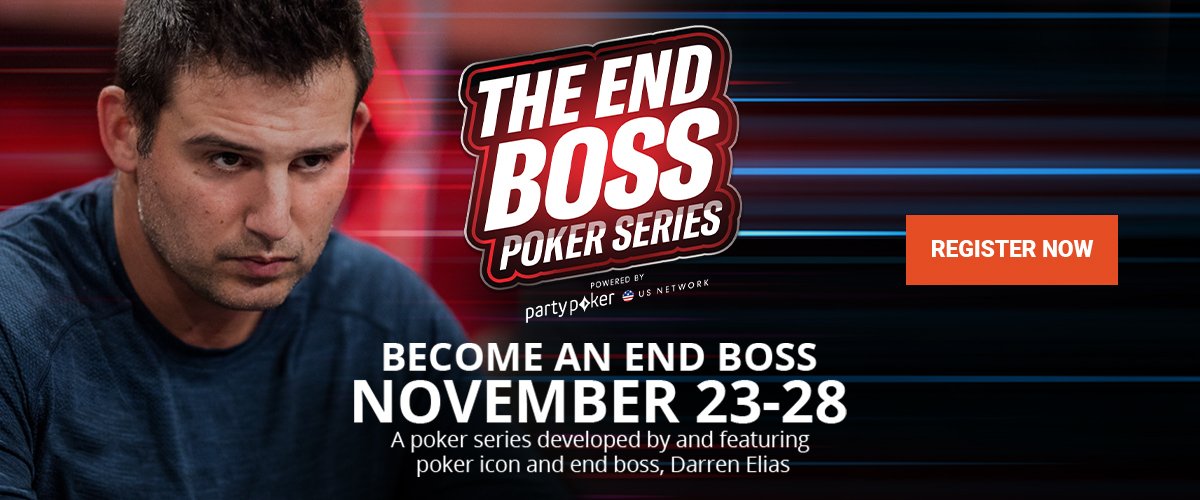Play Better Poker with LearnWPT Live Stream - Featuring Guest Brian Altman
Get LIVE, first-hand tips from a 3x World Poker Tour Champion on how to improve your poker game! 📺
LearnWPT, the Official Poker Education Platform of the World Poker Tour®, proudly presents Play Better Poker with Instructors Katie Stone and Brian Altman starting at 10:00 AM EST on January 20th LIVE from the WPT Lucky Hearts Poker Open at Seminole Hard Rock in Hollywood, Florida!
If your goal is to kickstart your poker game, then look no further. You'll have unparalleled access to hear directly from top players and get valuable strategies to improve your game plan!
Catch all of the action and be sure to RSVP for this amazing live show ↘️
Listen as the most successful poker players in the game share their secrets about how to Play Better Poker! 🎙️
Watch this fast-paced online talk show including in-depth interviews with the top poker players in the WPT Universe, and discover how they learn and improve at poker through study tips and unique techniques featuring exclusive LearnWPT training tools and content.
Do you have 30 minutes to start Playing Better Poker? 🂡
With 15 years of experience as a professional poker player, LearnWPT Instructor Katie Stone is your personal guide for building a poker study routine and improving your game. You will not only be able to ask specific questions about your game and how to improve but also to get expert insight from some of the greatest in the game on how they consistently improve at poker, all while having fun!
Joining Katie LIVE on the next Play Better Poker show is 3x WPT Champion, Season XVIII Player of the Year, and the newest member of Team LearnWPT- Brian Altman!
Sharpen your pencil ✏️ because it's time to take notes and ask questions to get answers from Katie and Brian- Email your questions to [email protected].
Tune In to Hear Katie & Brian Talk About:
🡆 The importance of maintaining a mindset for growth and learning.
🡆 The value of having a community of trusted peers to help you learn and grow.
🡆 Why balance and family time are important to maintaining peak performance.
We know how difficult it can be to learn poker on your own, so we’re inviting you to study with Team LearnWPT!
Play Better Poker is designed to provide a place for poker players of all skill and experience levels to learn together! We'll teach you easy-to-use strategies to study and improve at Texas Hold’em, while also giving you unprecedented access to the mindset and approach to learning used by pro poker players. But don't worry - LearnWPT is a safe place to start your journey as a poker player, and we know that everyone learns at their own pace.
Submit questions before each show by emailing [email protected] and get the answer live. For more information and updates for the next show make sure you bookmark learnwpt.com/playbetterpoker and check back often.
Meet Your Host Katie Stone
Katie Stone began her gaming career as a child in chess, and later on while in college she pioneered chess camps for kids across the country. She is a professional poker player and a staunch advocate with a focus on growing the game of poker. Katie is also a major proponent of using the decision-making skills and lessons learned in poker as a means to better navigate challenges and improve performance at work and in daily life. Throughout her 15 years long career as a poker professional, Katie has been constantly searching for new methods to master her poker skills and help other players Play Better Poker.
As an Instructor for Team LearnWPT Katie delivers expert strategy and a unique perspective on learning poker to the LearnWPT Membership. Her accolades in poker include being a 2x WSOP Circuit Ring Winner and $1.2 million combined live and online tournament earnings. In addition to her role as a LearnWPT Instructor, Katie is also a Content Producer and Commentator for LearnWPT.
Her front-row seat to the explosion of online poker and the evolution of poker study makes Katie a uniquely qualified resource for cash game and tournament strategies, detailed hand analysis, online vs live strategies, decision making in real-time at the table, adjusting for known opponent tendencies, using your feedback loop for improvement, as well as learning what it takes to succeed as a pro.
Have an Inside Look at Katie’s Quest to Play Better Poker:
Meet Katie’s Guest 3x WPT Champion and Season XVIII Player of the Year- Brian Altman!
Brian Altman or “Alty” as he is known by fellow rounders on the virtual and live poker felt, is universally considered to be one of the greatest tournament players in the world. Brian’s career spans over a decade and includes $5.5 million in worldwide tournament earnings in live poker alone, with $2.8 million of those winnings from the World Poker Tour.
As a 3x World Poker Tour Champion and the Season XVIII WPT Player of the Year, Brian has demonstrated a level of consistency and execution in the most high-pressure spots that is seldom matched by his peers. Before his ascent into the WPT record books, Brian cemented his legacy as an elite online poker player by winning the prestigious Pokerstars Yearly Tournament Leaderboard in 2010.
Brian’s success is born from a mindset focused on self-improvement and lifelong learning, including a commitment to personal health and fitness. An avid fan of hiking and travel, Brian balances his dedication to excellence at the table with personal interests away from the table including spending plenty of time with friends and family.
As the newest member of Team LearnWPT, Brian will reveal his winning approach for the first time and share his proven strategies through Strategy Episodes, Webinars, and interactive Live Workshops.
Check Out This Throwback from Brian’s WPT Seminole Hard Rock Lucky Hearts Win in 2020:
Join Katie and Brian for an enlightening discussion on his championship mindset, his dedication to self-improvement and lifelong learning, what makes learning fun, and the methods he uses to stay on top of today’s tough poker tournament fields.
Play Better Poker is the perfect opportunity for you to get started on your poker learning journey in a fun and engaging way. Join us for a fascinating conversation with the one and only poker legend, Brian Altman. Watch for valuable strategies that will help improve your play and help you have more fun at the table!
The year 2022 is the perfect time to start making changes in your poker game. You'll learn strategies from a legendary player and pick up tips that will help you improve quickly!
Whether you’re a new, returning, or already well-seasoned player – Play Better Poker is here to help and get you started learning valuable poker tips in a fast and fun 30 minute LIVE poker strategy show. Join us!
Subscribe below to receive FREE poker strategy content, quizzes, downloadable tools, and more.







































